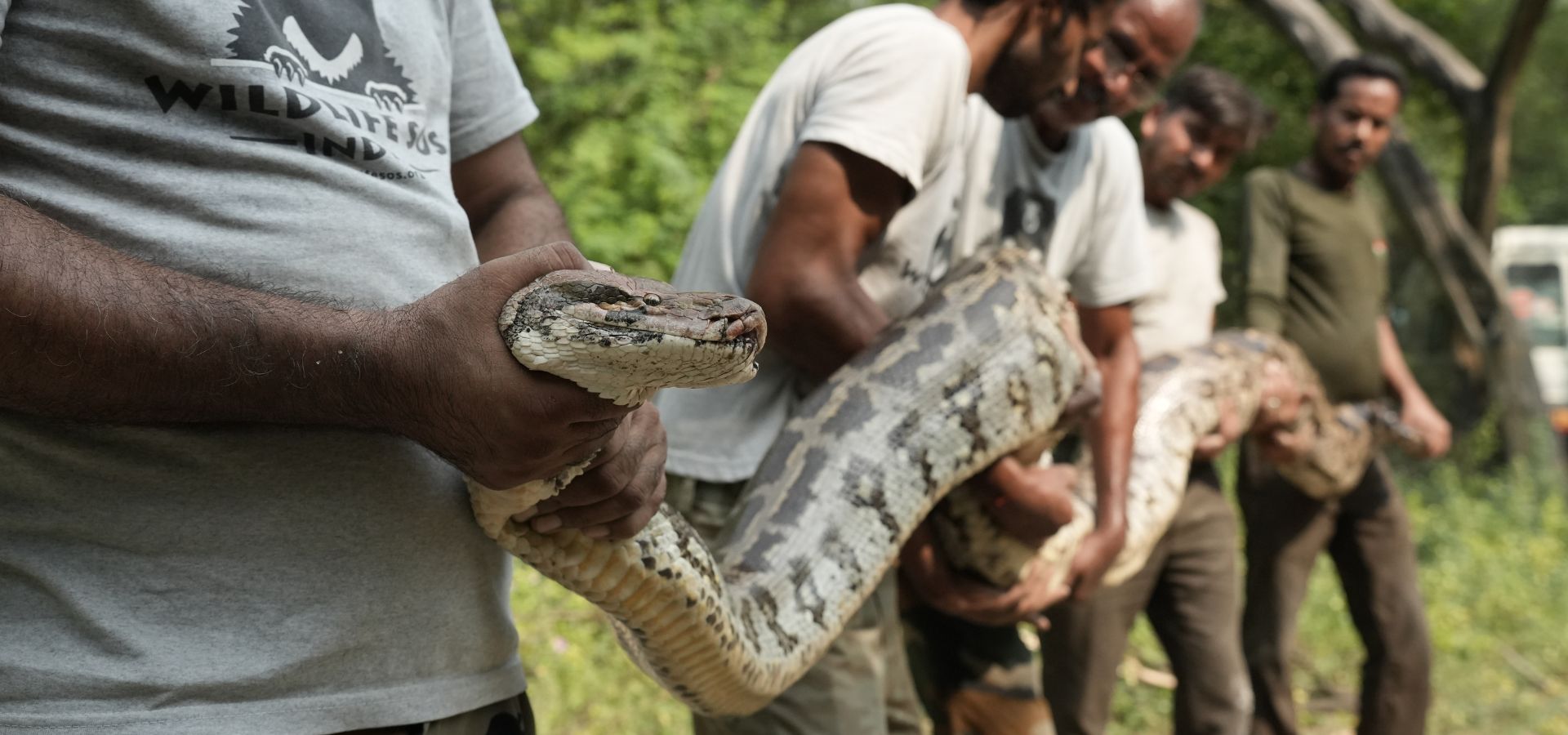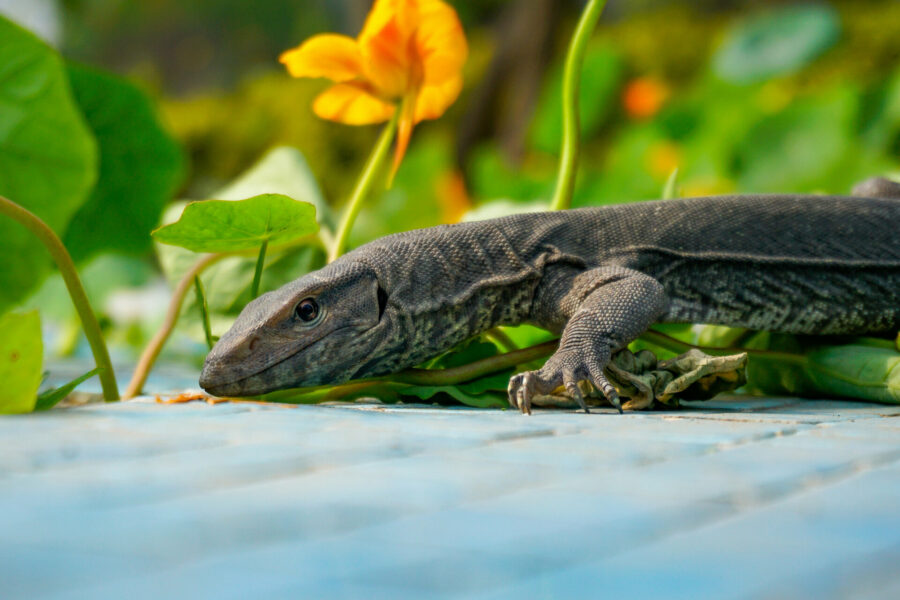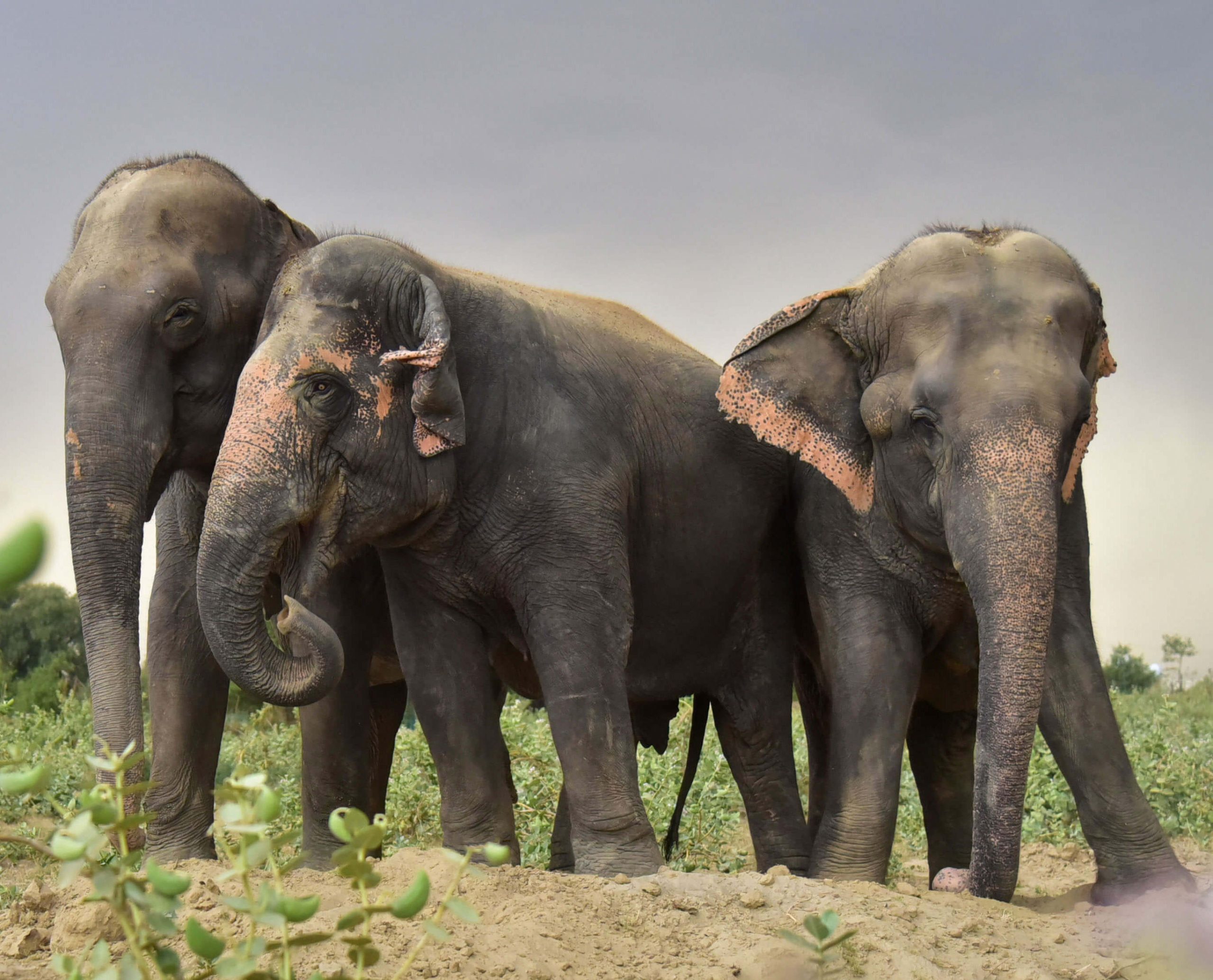Imagine you’re near an old open well when suddenly, you notice something massive lurking at the bottom. Locals going about their daily routine in Kiraoli village of Agra, Uttar Pradesh came across such a sight that left them dumbfounded… but it didn’t take long for them to discover that what they saw wasn’t a large cloth or an abandoned bucket. It was an Indian rock python (Python molurus) with an enormous girth!

The Indian rock python is non-venomous, but it is one of the longest and largest snakes found in India that can grow up to 20 feet long! When the call came in from locals and forest officials that reported the presence of a huge snake, our rescue team knew they were in for a challenge. However, little did they know that the concerned snake would eventually reign the list of reptile rescues they had made so far.
Pythons usually move closer to human settlements, especially during the harvest season, to seek food. Agricultural areas, which are rich with rodents, draw these snakes, offering them both shelter and hunting opportunities. A python’s size dictates its diet, and it can hunt down animals such as cats and dogs present in rural locales.
While our skilled rescue team was aware of these facts, the peaking panic of the informants had them arrive at the site with all necessary tools. It was only when they looked into the well did they realise the “immensity” of the situation. How to safely rescue an unusually gigantic-sized python from the depth of a well!
The first rescue attempt led to the massive, traumatised python making a lunge, highlighting the unpredictability of handling a big snake. The Wildlife SOS team then came up with an innovative plan. They lowered a broad jute bag into the well for the python to be carefully guided into. When the large snake finally made its entry into it, it took not just our team, but forest officials and many locals to come together to pull up the weighty sack.
After the incredible, back-breaking rescue, the rock python was transported to our transit facility in Mathura. As part of our preliminary inspection to assess its health, the weight of the snake was measured, a number that our rescue team and veterinarians curiously awaited. The answer had their jaws drop.
For the first time ever, our team had successfully rescued an Indian rock python that had a staggering weight of 55 kgs! The 13-feet-long snake was declared fit by the medical staff, and it was released back into the wild.

Indian rock pythons are known to weigh anywhere between 15 to 90 kgs, which makes them true heavyweight champions in the snake world! Its enormity makes it distinct from other snakes that are also spotted in human settlements. Wildlife SOS has been involved with numerous reptile rescues, however, this is the heaviest python that our team dealt with. While this snake found its way back into the wild, our rescue team headed to address not one, but three other SOS calls on the very same day — all concerning Indian rock pythons.
In Mathura’s Kurkanda village, farmers reported the presence of a python, which was discovered resting in a potato field by the rescue team. The python, measuring 10-feet-long, was safely relocated to a forested region. In Dhana Teja, a 7-foot-long python was rescued from near a bitumen drum filling facility, and shortly after this, the team carried out another operation at Parkham Village, where an 8-foot-long python was spotted in a paddy field. Timely information by the locals led to swift rescues and release of all three pythons by our expert team of rescuers in Uttar Pradesh.

The onset of winter plays a crucial role in an Indian rock python’s brumation pattern, a period during which most snakes are only partially active and have lower metabolism rates. As ectothermic reptiles, they rely on external environment heat to regulate their body temperatures. However pythons, being larger in size, venture out of their burrows to bask under the sun for longer periods than the rest. The rising presence of humans near their resting zones has been forcing this duration to become shorter, which can also adversely affect pythons’ ability to reproduce.

While our Rapid Response Unit remains on their toes all day every day, November 4, 2024 will long be remembered for four mighty pythons being rescued in a single day. These rescues were made possible due to alert citizens reaching out to forest officials, who then connected with Wildlife SOS to perform rescues professionally, saving the snakes and allaying the fear among locals.

The recent instances indicate that though the chances of encountering snakes during winters is low, they can still make a surprise appearance. In these situations, we urge the public not to attempt handling the situation on their own, but to reach out to the nearest wildlife organisation or forest officials immediately.
Wildlife SOS operates 24/7 emergency rescue helplines across four regions in India:
Delhi-NCR (+91 9871963535)
Agra (+91 9917109666)
Vadodara (+91 9825011117)
Jammu & Kashmir (+91 7006692300, +91 9419778280)





